Dental implants are surgical-grade root devices that support permanent tooth prosthetics that are manufactured to last a lifetime. These artificial roots are anchored in the bone beneath the gums where they become fused into the jaw. A crown is mounted atop the implant for a long-lasting and natural looking smile. Many dentists and patients prefer dental implants because they offer the same function as natural teeth and also help prevent bone atrophy in the jaw. Dental implants may be used to replace a single missing or damaged tooth or to restore an entire smile.

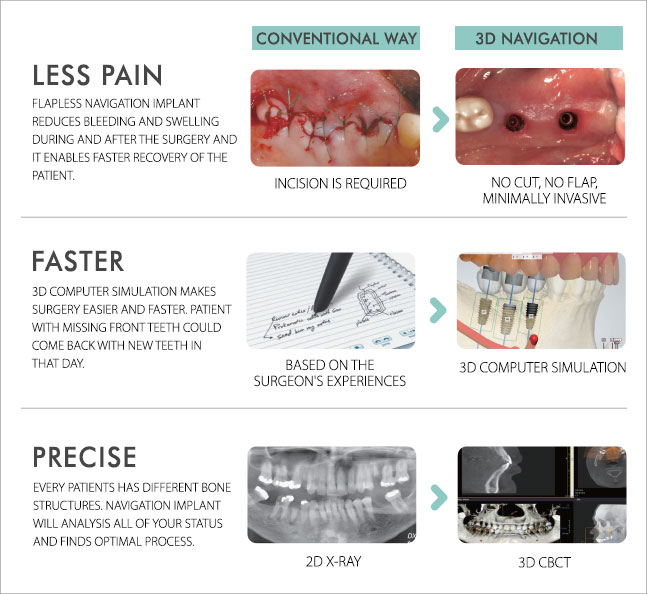
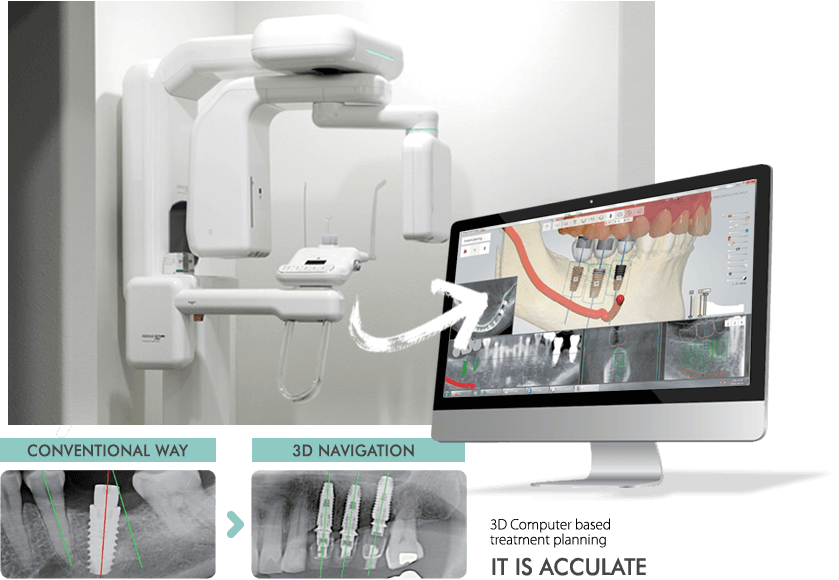

All-On-4 dental implants refers to a surgical technique to replace missing teeth, in which four titanium dental implants are used to support a full fixed bridge of 10-14 teeth. The All-On-4 dental implant procedure is typically utilized for edentulous patients (those with no natural teeth remaining) or those patients whose teeth are severely broken down, decayed, or compromised by gum disease. In the past, these patients’ only option for teeth replacement was to deal with the inconvenience and discomfort of wearing dentures. With the All-On-4 dental implants prosthodontic procedure, patients may now have their entire upper and/or lower sets of teeth replaced with permanent prosthetic bridges that look and feel just like their natural teeth.

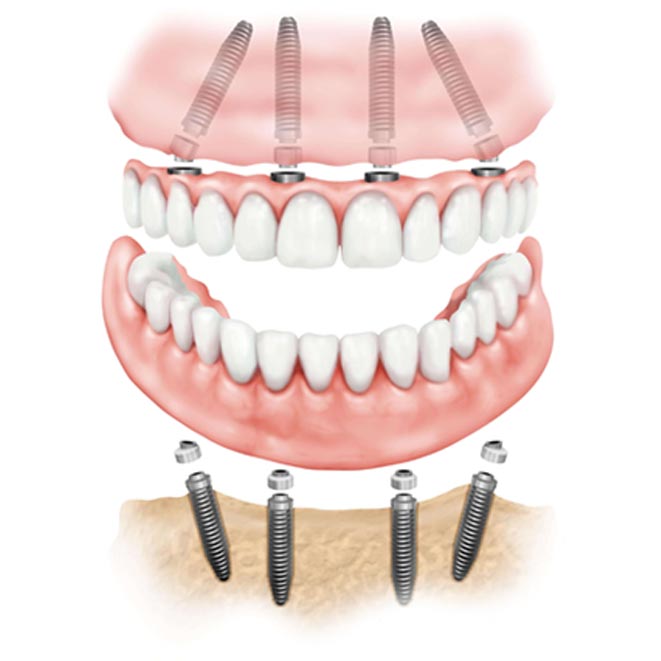
Because of the groundbreaking technology of using angulated dental implants, the All-On-4 technique does not require bone grafting and can be used for patients whose jawbone loss prevents them from being candidates for traditional vertical dental implants. With approximately 40 million Americans having lost all of their natural teeth, the All-On-4 dental treatment offers an option that can improve quality of life and restore a confident smile in less time than ever before.
Dental implants have become the new standard for replacing missing teeth, and for those who need entire arches replaced, the All-On-4 procedure can be a life-transforming solution.
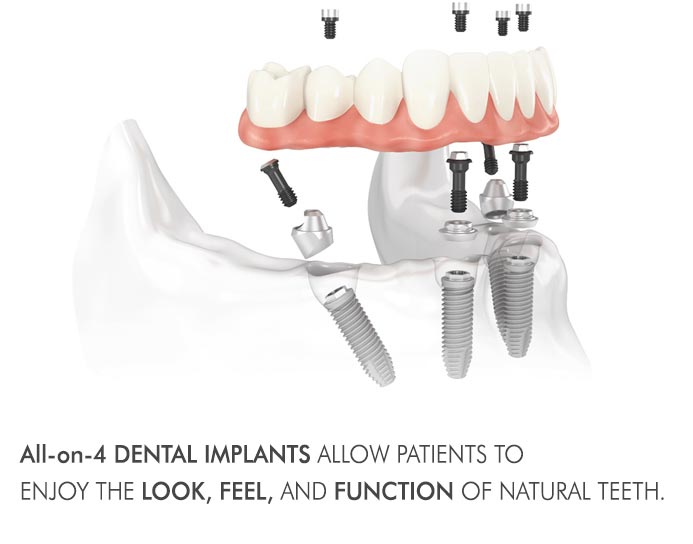

With All-On-4 dental implants, patients have the freedom to eat and smile without worrying. Many patients report feeling and looking more youthful. Oral health is also improved with All-On-4 implants due to halting jawbone loss.
At 5 STAR DENTAL, we are committed to helping our patients achieve beautiful, healthy smiles that last a lifetime. If you currently wear dentures or if you have been told that you are at risk for multiple tooth loss due to decay or periodontal disease, contact our office to find out if All-On-4 dental implants are the solution for you.

Dental implants are small titanium posts that are surgically placed directly into one’s tooth root after a tooth has gone missing or has been extracted. They serve as a strong and lasting foundation beneath the gumline upon which a full set of permanent or removable prosthetic teeth, bridge or single tooth will be placed.
The dental implant has three parts: The titanium post that is placed into the jawbone. An abutment that attaches to the dental implant and secures the replacement tooth, and the replacement tooth, either a dental crown, hybrid bridge or denture.
The actual dental implant is a titanium post that is placed into the jaw bone to function as the artificial root for a replacement tooth. A dental implant can be used to replace one, several or all of a person’s missing teeth. The restoration, either a dental crown, bridge or denture is generally made from a tooth-like porcelain material to look and feel like natural teeth.
There is no such thing as being “too old” for a dental implant. Older patients benefit from dental implants as much as younger ones. Dental implants promote better retention of bone structure in the jaw and prevent additional tooth loss that can result from deterioration of the jaw bone. Dental implants can also improve periodontal health and the health of remaining natural teeth.
As long as there is healthy bone structure in place to accept the dental implant, anyone can receive a dental implant. If you are experiencing bone loss as a result of missing teeth or gum disease, Dr. Lee can perform a bone grafting procedure to build up the bone to accommodate the dental implant.
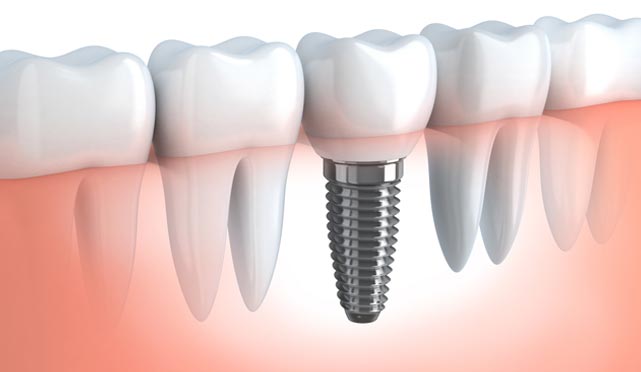
The dental implant procedure is a relatively simple treatment that involves three basic steps:
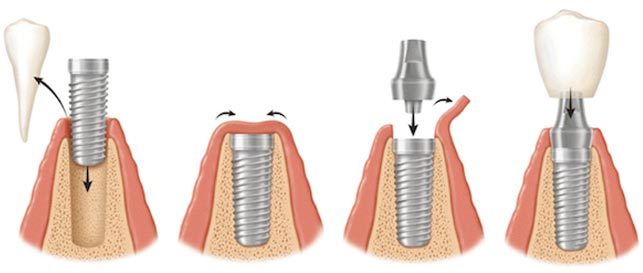
The first step in the dental implants process is to place the dental implant. This is often done at the same time the tooth is removed. The dental implant, usually a titanium screw, will be placed in the jaw bone. The dental implant will integrate with the bone through a process called osseointegration, creating a firm and stable foundation for the replacement tooth.
During the healing process, you will have a provisional, or temporary, restoration. The temporary restoration will hold the place of the final restoration and promote proper healing along the gum tissue. Your cosmetic or restorative dentist will take impressions of your surrounding teeth and work with a dental laboratory to create the final dental crown, hybrid bridge or denture that will serve as your replacement tooth/teeth.
Once the dental implant has completely healed and integrated to the bone, the temporary restoration will be removed and the final restoration will be fastened and secured to the dental implant for a permanent fit.
One of the greatest benefits of dental implants is that they look, function, and can be cared for just like natural teeth. Dental implants are designed to last a lifetime. You don’t have to worry about getting cavities in dental implants, plus, you can eat and floss normally with dental implants.
One of the things that sets the Bethesda Dental Implant Center apart from other dental implant centers is the fact that we place significant emphasis on follow up visits with our patients. We want to maintain a relationship with our patients to ensure the long term success of their dental implant and health of their smile.
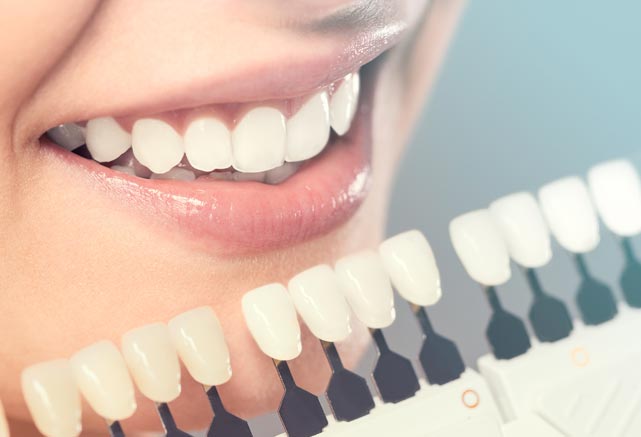
A dental implant is the gold standard for replacing a missing tooth. Used to replace one, several or all of your missing teeth, dental implants provide the most natural restoration with long lasting benefits.
A dental implant fuses to the living bone through a process known as osseointegration to replace the tooth at its root. No other restoration can provide this same stability. With dental implants, you can eat, smile and speak the same (or better!) as you would with your natural teeth.
Dental implants are one of the longest lasting dental restorations. A dental bridge will need to replaced about every 10 years, but a dental implant can be expected to last 30 years or more.
Bone loss is a common problem with missing teeth. As the bone recedes, it can create problems for other teeth and cause the face to sag or droop. A dental implant will help maintain bone density and the natural shape of your face and smile.
Dental implants stay in your mouth – that means you don’t have to soak them overnight or worry about losing them when you’re out enjoying life. With dental implants, you don’t have to use adhesives – that means you can taste and enjoy all the foods you love.
A dental implant is a one tooth solution to a one tooth problem. Placing a dental implant does not impact surrounding healthy teeth. Treatment with a bridge involves filing down two surrounding (usually healthy) teeth to act as anchors for a three unit bridge. Damage to the surrounding teeth is permanent. In the long term, these teeth typically fail due to the stress of the bridgework. This often results in the loss of those teeth and need for an even longer bridge.
Dental implants are one of the most predictable and successful restoration methods. Success rates are in the high 90% range with long-term outcomes. More importantly, dental implants have a very high patient satisfaction rate compared to other dental restorations. Patients with dental implants often say “I wish I’d done it sooner”, a true testament to the benefits of dental implant treatment.
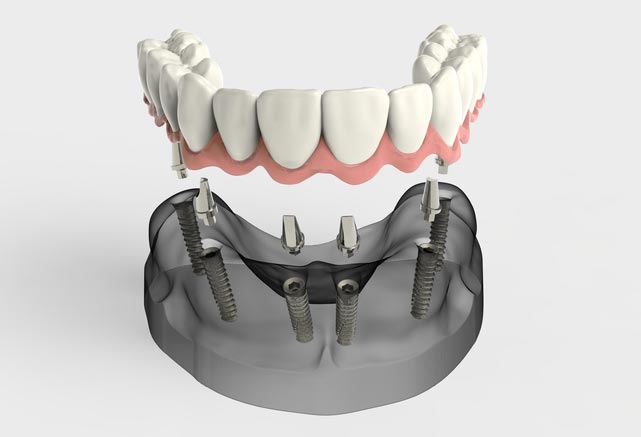
Implants can be used in a variety of ways to replace missing teeth
When you have one tooth missing, a single implant is inserted into the bone to replace the root part; a custom-made, color-matched, stain-resistant crown is then placed on top to mimic an actual tooth. This treatment choice has the highest success rate, making it the best long-term investment for replacing a single missing tooth – even if the initial cost is slightly higher than other options. An implant will never decay or need root canal treatment, and feels just like a natural tooth.
When you have more than one tooth missing, you don’t need to replace each one with an implant. Instead, implant teeth can act as supports for fixed bridgework. For example, if you are missing three teeth in a row, we can place two implants, one on either side of the gap, and a crown in between that has no implant underneath. The advantage to this method is that you don’t need to rely on natural teeth to serve as the supports for the bridge. When natural teeth are used as abutments for fixed bridgework, they can become weakened and subject to tooth decay and root canal problems, something you’ll never have to worry about with dental implants.
Implants can support an entire row of upper or lower replacement teeth that are fixed in the mouth and never removed. Sometimes, the replacement teeth can be supported by just four implants. If the jaw bone has deteriorated, more implants may be needed to support a row of 10 to 12 teeth. Dental implant-secured replacement teeth protect your jaw bone, won’t slip, and should last a lifetime.
Have you lost all of your top or bottom teeth? You may notice that your denture doesn’t fit as snugly as you like. Implants can make dentures more comfortable to wear so you can eat and talk with confidence. Here’s what happens with traditional dentures: since you no longer have tooth roots, your jaw bone recedes, eroding the bone ridges that support your dentures. Receding bone will most likely impact your appearance. As your jaw bone recedes over time, your face will begin to sag, making you appear older. By placing implants in the top or bottom jaw, over which the removable denture can attach, we transfer pressure away, preserving the bone ridge. The stability provided by the implants also prevents the tongue from easily displacing the lower denture. Implant-secured dentures also reduce or eliminate the need for denture adhesives.